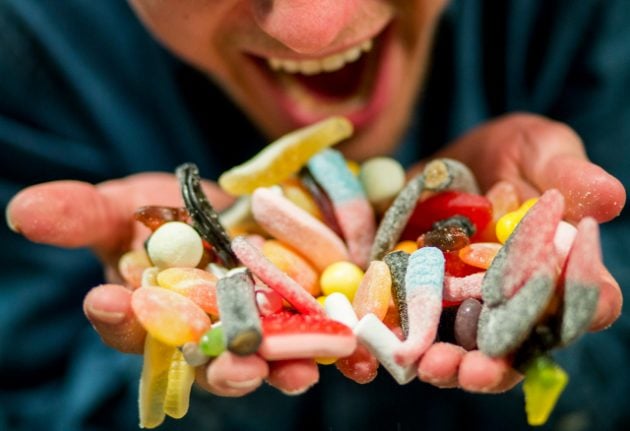After living in Stockholm for a year and a half, one thing has become crystal clear to me: Swedes are born with an insatiable sweet tooth. Swedes take their sweets seriously… very seriously. In fact, their confectionery consumption is a rich part of their culture.
First of all, there is the most quintessential Swedish experience of fika. This is a quick break taken during the day to enjoy a coffee and a small sweet treat.
In 2016, the average Swede ate 23.1 pounds of candy according to this article, making Sweden the country with the 7th highest per capita candy consumption (say that five times fast).
This does not surprise me at all. American readers may know of the little candy stores in US malls where you grab a shovel, fill a bag full of candy, and weigh it? Every store, gas station, movie theatre and you-name-it in Sweden has one of these. One day, I was talking to my Swedish landlord who is currently living in America. I asked him how the States were treating him and if he missed home. He replied simply: “I miss the candy.”
Beware: Swedes also have an obsession for salty liquorice, so proceed with caution!
Most of this candy is eaten on one special day of the week: lördagsgodis or Candy Saturday. Possibly in an attempt to remain lagom – enjoying just enough without over indulging – Swedes limit the majority of their candy consumption to Saturdays. This seems to cause children and adults alike to anticipate and appreciate lördagsgodis even more.
READ ALSO: Seven delicious food dates in Sweden
Kevin and JoEllen Buckley in front of a traditional Swedish Dala Horse. Photo: Private
Lördagsgodis is not the only special day associated with a sweet treat. Swedes have a few calendar days throughout the year when one MUST enjoy a certain Swedish pastry. Coming up soon is my wife JoEllen's favourite: Semla Day, celebrated on Fat Tuesday. Imagine a mini bread bowl of soup, but sweet and filled with whipped cream and almond paste and topped with powdered sugar.
During the darkest week of the year, Sweden celebrates St Lucia. This day is filled with music that allows Swedes to commiserate in the darkness while looking forward to the bright days to come. On St Lucia everyone must eat a few luciabullar. Though these pastries are not very sweet they are flavoured with saffron and two raisins.
Most importantly, there is kanelbullens dag, Cinnamon Bun Day, on October 4th, celebrated since the time after World War One when rationed food started to make its way back into Swedish homes.
The kanelbullar are definitely the most beloved pastry in Sweden; supposedly the average Swede eats 316 of these a year. Appropriately, the first kanelbullar I ever had was on kanelbullens dag and it was an eye-opening experience. Instead of being covered in icing, these rolls are sprinkled with sugar crystals and jam packed with cinnamon. YUM!
So the next time you are at the mall and see one of the little candy stores, consider picking out a few colourful treats and enjoy them on Saturday!
Kevin and JoEllen Buckley moved from Nashville, Tennessee, to Stockholm two years ago. Read their blog here. Do you want to write a guest blog post for The Local? E-mail [email protected].



 Please whitelist us to continue reading.
Please whitelist us to continue reading.